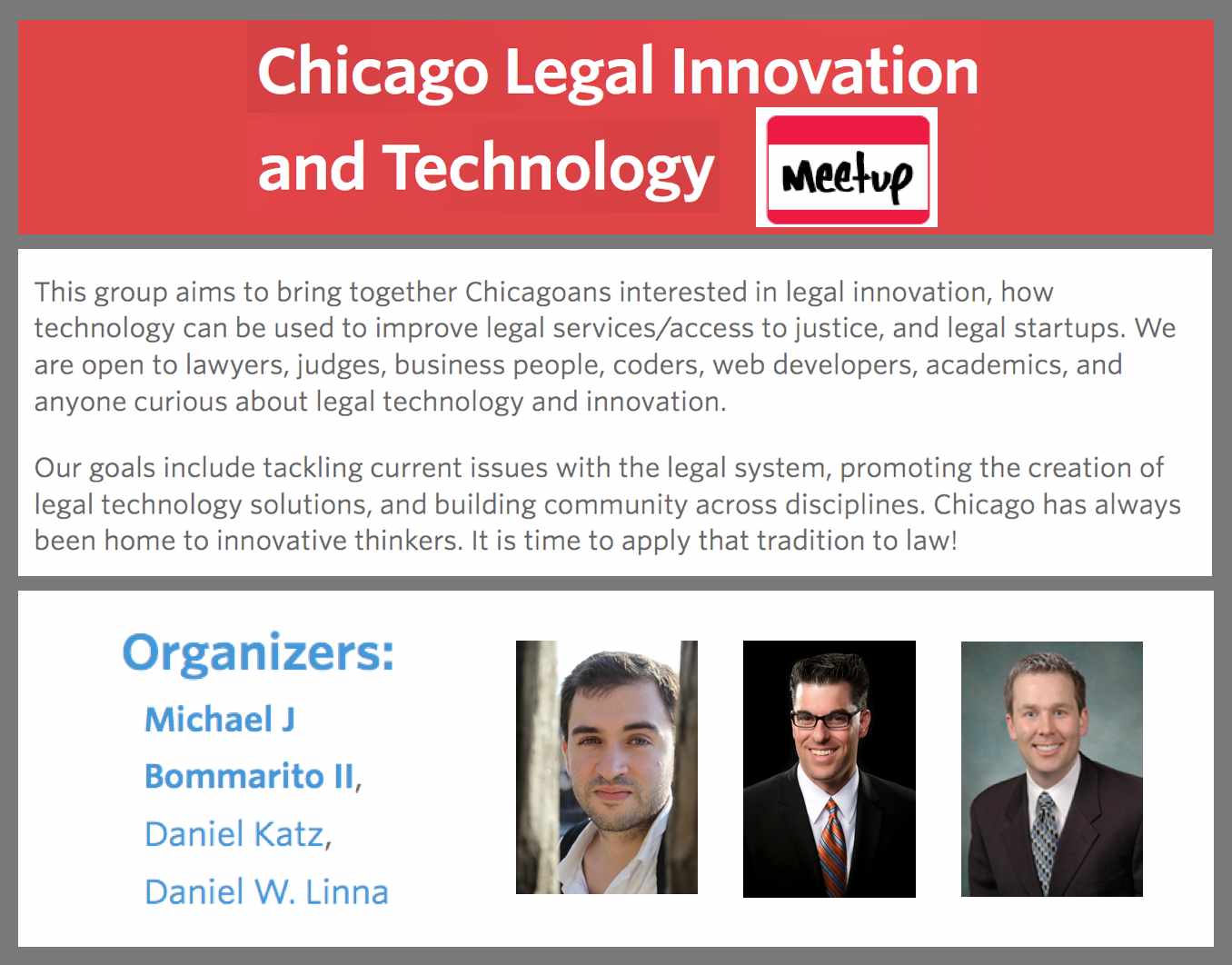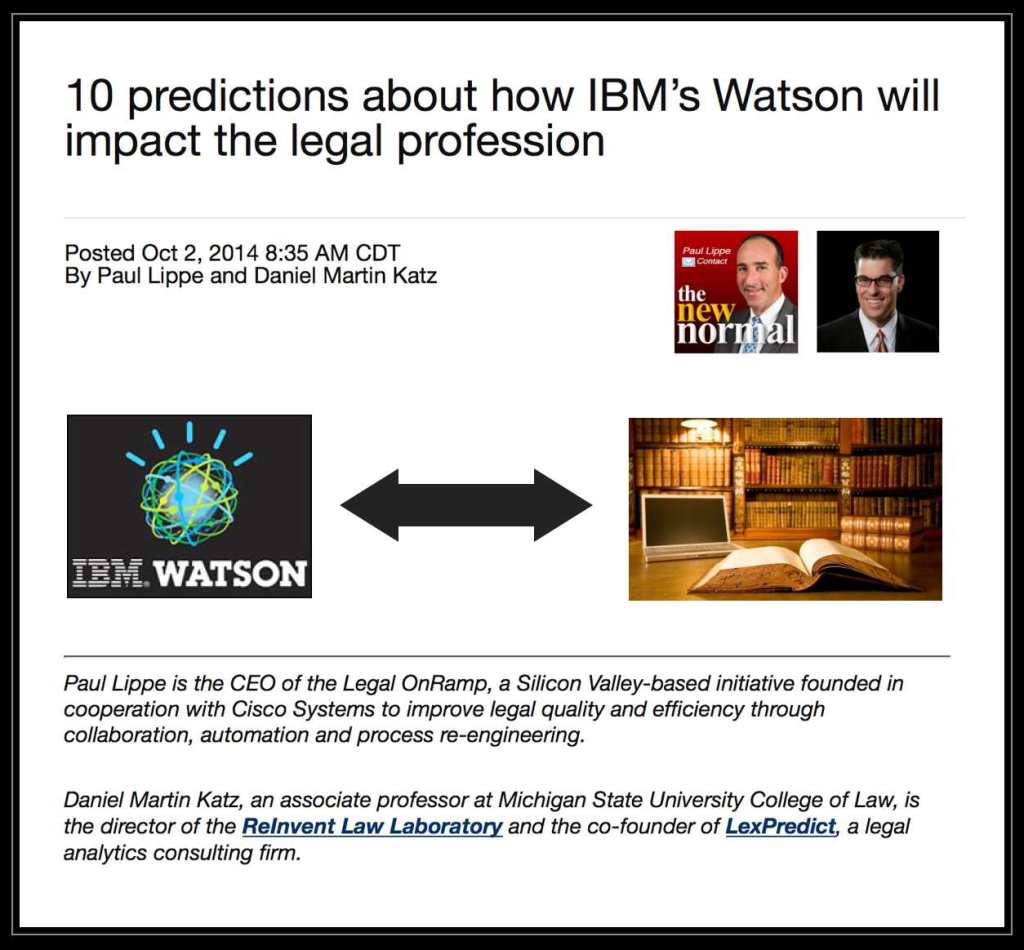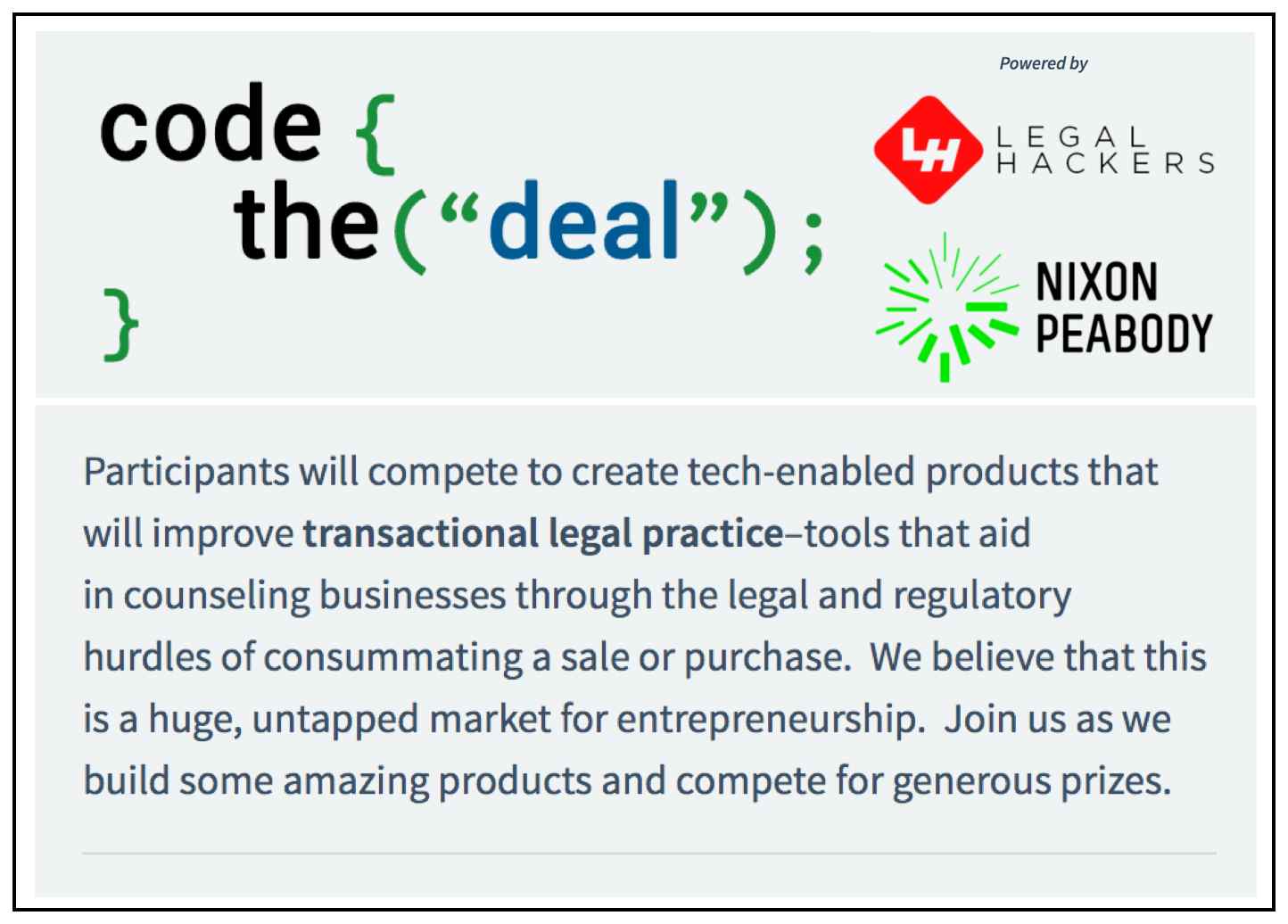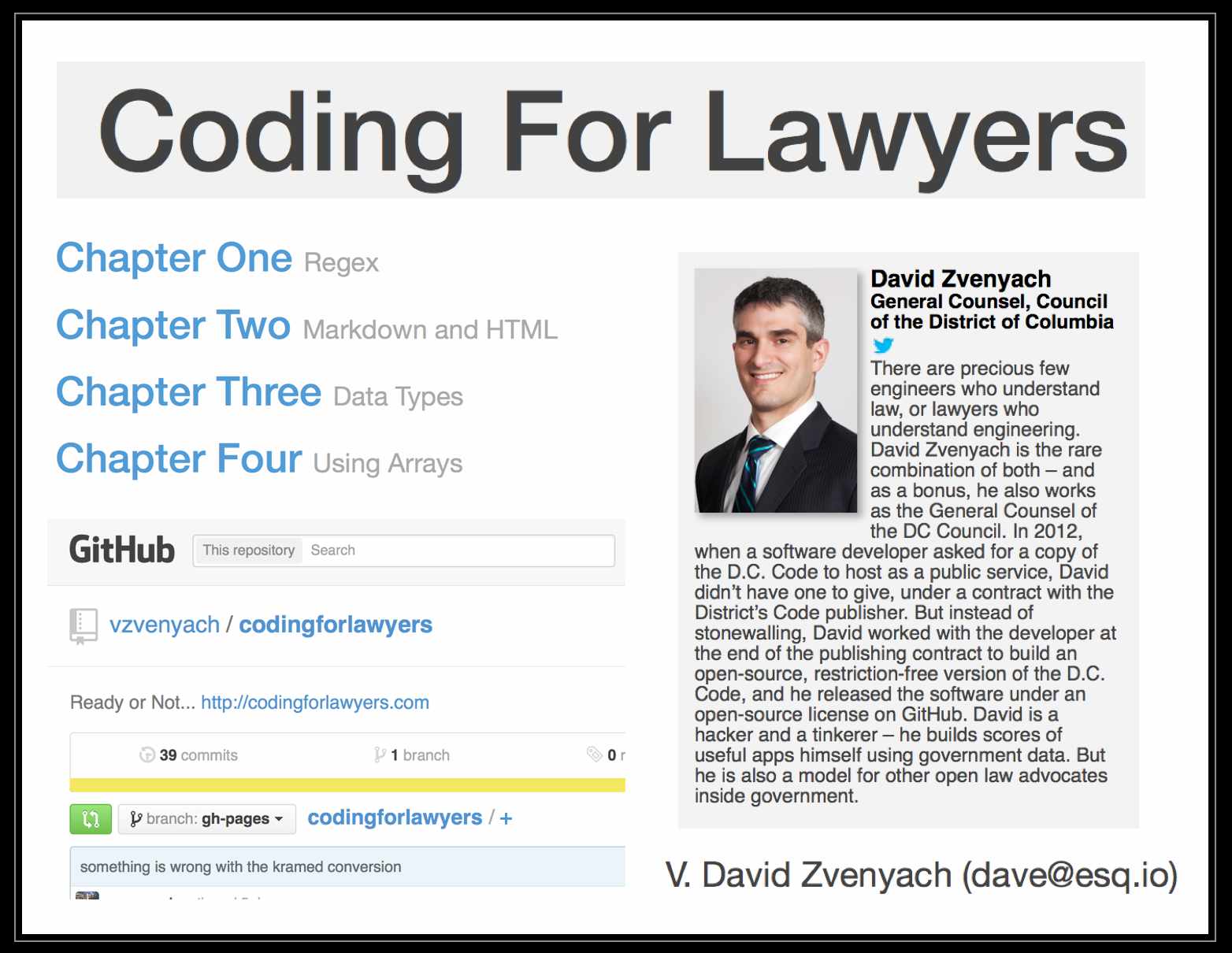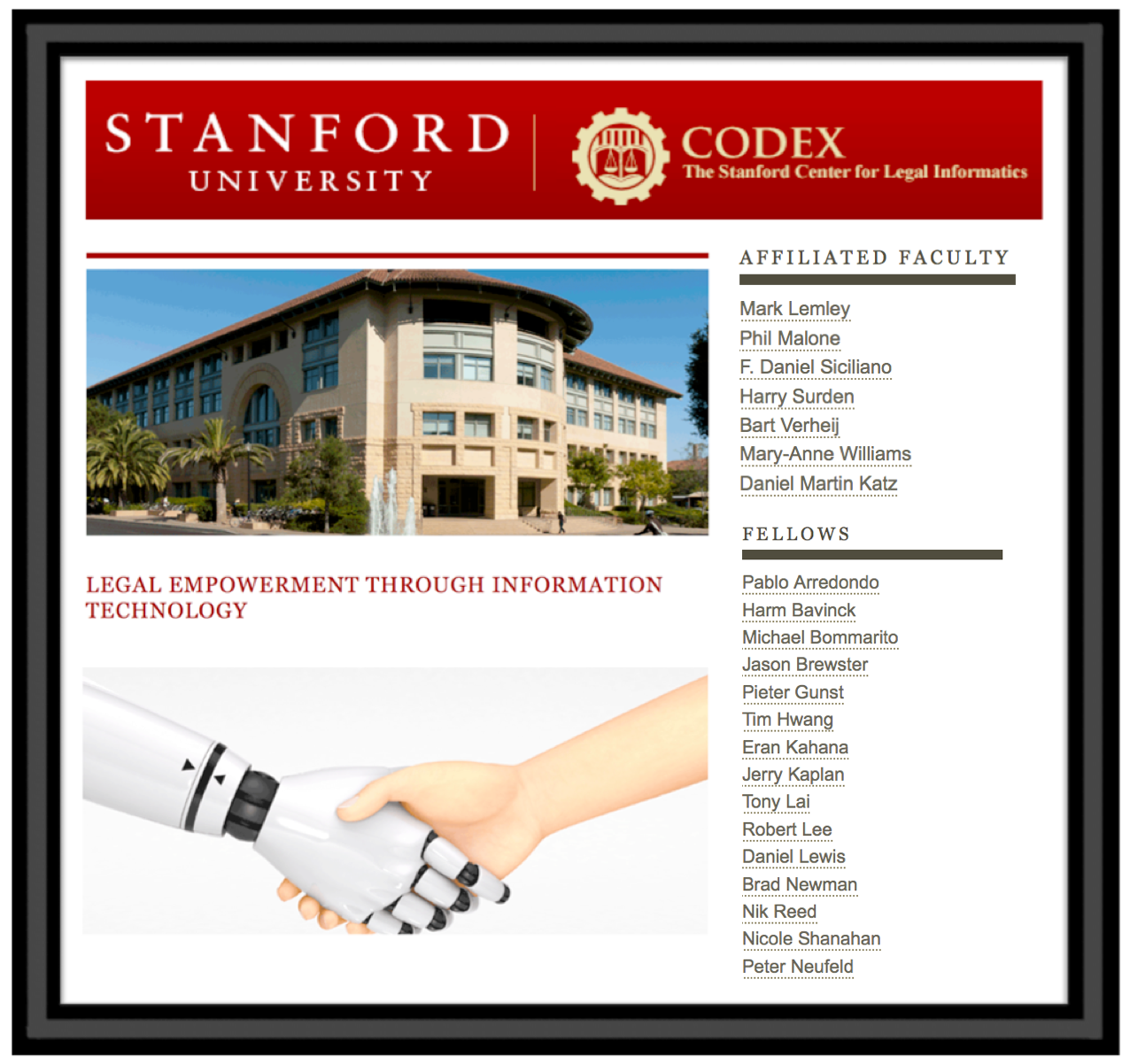 While our primary home will remain here MSU Law, Mike Bommarito and I are excited to be joining up with the good folks at CodeX – Stanford Center for Legal Informatics. Based upon our shared interests, we plan to work together on some joint research activities with some of the many talented individuals in the Stanford CodeX ecosystem. I will be joining CodeX as an External Affiliated Faculty and Mike will be joining as a CodeX Fellow. We are very excited to push forward together in the short, medium and long term!
While our primary home will remain here MSU Law, Mike Bommarito and I are excited to be joining up with the good folks at CodeX – Stanford Center for Legal Informatics. Based upon our shared interests, we plan to work together on some joint research activities with some of the many talented individuals in the Stanford CodeX ecosystem. I will be joining CodeX as an External Affiliated Faculty and Mike will be joining as a CodeX Fellow. We are very excited to push forward together in the short, medium and long term!
Tag: legal services
Innovation and Emerging Legal Technology (Slides by Ron Dolin from Stanford Center on the Legal Profession)
This past Thursday Ron Dolin and I spole on a panel at the 19th Annual Thomson Reuters Legal Executive Institute Law Firm Leaders Forum. Above are Ron’s slides which many of you might find interesting. Below is a modified version of my presentation Five Observations Regarding Technology and the Legal Industry (which I gave at the LegalWeek Corporate Counsel Forum last month).
Thanks to Ralph Baxter (Chairman Emeritus @ Orrick) for inviting me to present to this extremely accomplished group of AMLaw 200 managing partners.
The 19th Annual Law Firm Leaders Forum – NYC (Presented by Thomson Reuters Legal Executive Institute)
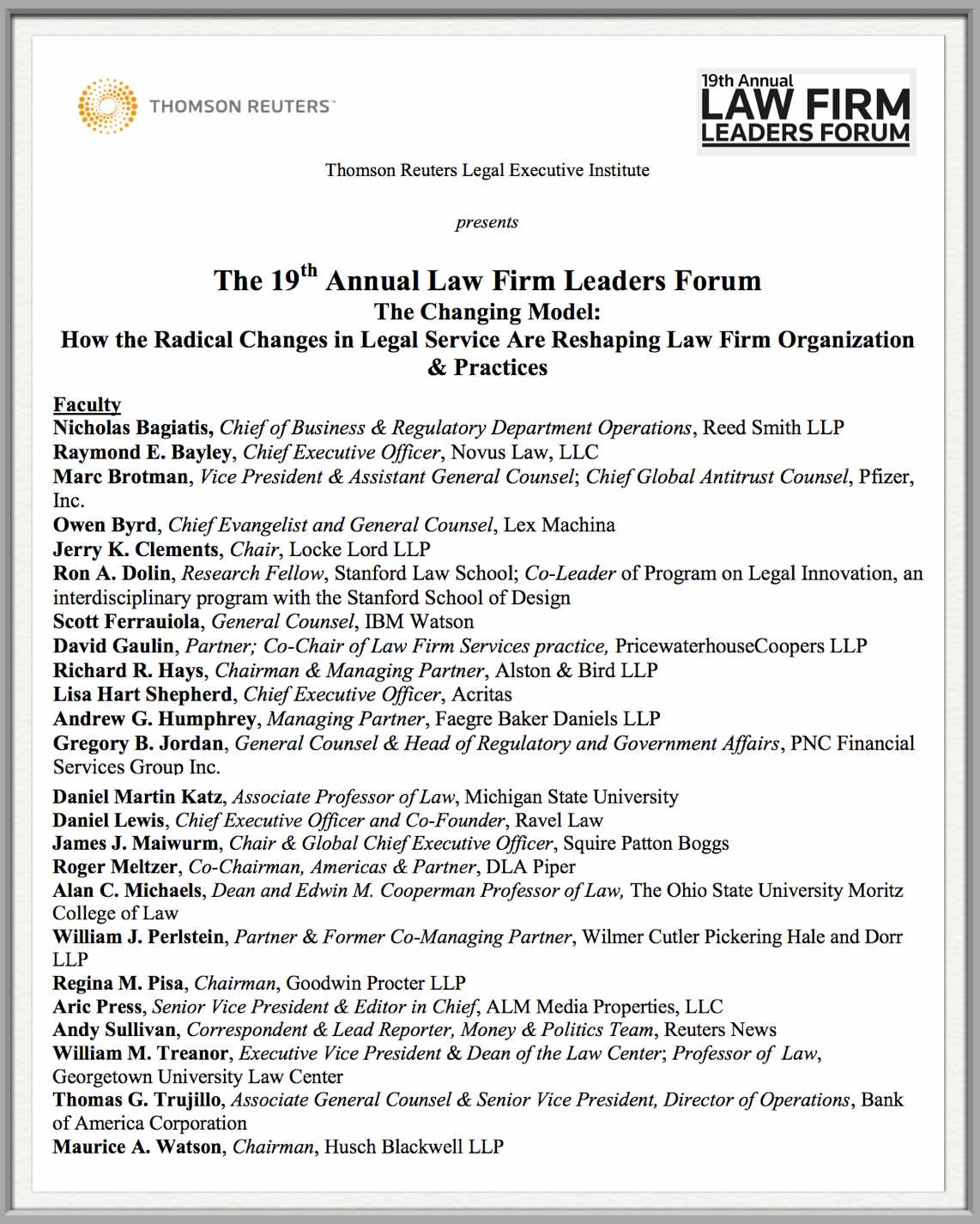 Tomorrow I will be speaking at the 19th Annual Law Firm Leaders Forum in NYC (Presented by Thomson Reuters Legal Executive Institute). This annual event draws a large number of leaders from the AMLaw 200 law firms. The focus of my panel will be the Emerging Role of Technology in the Law Firm Model. I am joined by a world class faculty which includes representatives from Law firms, In House, Legal Tech and the Legal Academy, etc.
Tomorrow I will be speaking at the 19th Annual Law Firm Leaders Forum in NYC (Presented by Thomson Reuters Legal Executive Institute). This annual event draws a large number of leaders from the AMLaw 200 law firms. The focus of my panel will be the Emerging Role of Technology in the Law Firm Model. I am joined by a world class faculty which includes representatives from Law firms, In House, Legal Tech and the Legal Academy, etc.
The MIT School of Law? A Perspective on Legal Education in the 21st Century (Forthcoming in Illinois Law Review)
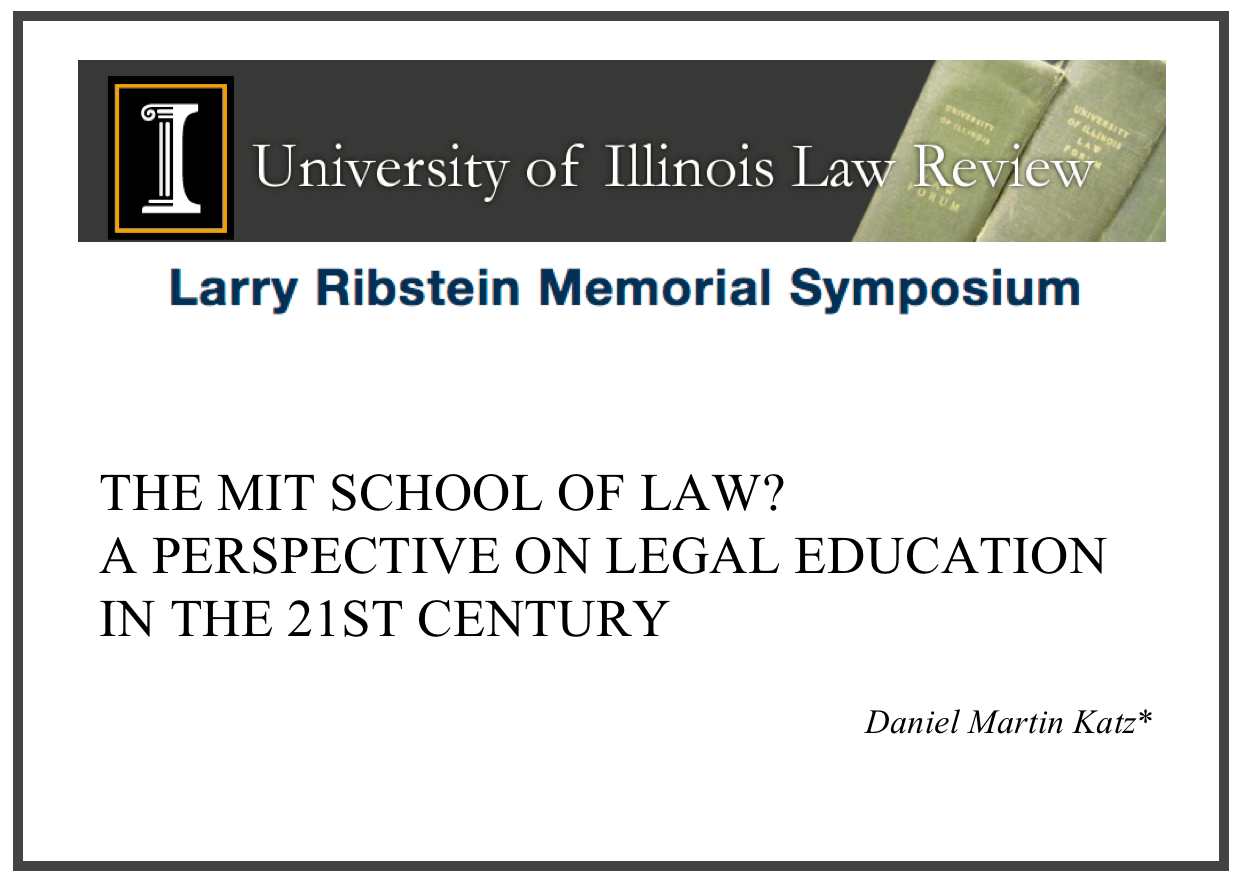 ABSTRACT: “Despite some of the blustery rhetoric attendant to the ongoing market transition, lawyers and the market for legal services are not going away. Lawyers serve integral roles in a wide variety of social and political systems. Their work supports the proper functioning of markets and helps individuals and organizations vindicate their respective rights. At the same time, the processes associated with completing their work—as well as the contours of their respective expertise and judgment—are already changing. These changes are being driven by a number of economic and technological trends, many of which Larry Ribstein identified in a series of important articles published in the years before his untimely death.
ABSTRACT: “Despite some of the blustery rhetoric attendant to the ongoing market transition, lawyers and the market for legal services are not going away. Lawyers serve integral roles in a wide variety of social and political systems. Their work supports the proper functioning of markets and helps individuals and organizations vindicate their respective rights. At the same time, the processes associated with completing their work—as well as the contours of their respective expertise and judgment—are already changing. These changes are being driven by a number of economic and technological trends, many of which Larry Ribstein identified in a series of important articles published in the years before his untimely death.
This Essay is offered as part of a symposium honoring the work of the late Larry Ribstein. It is a thought exercise about a hypothetical MIT School of Law—an institution with the type of curriculum that might help prepare students to have the appropriate level of substantive legal expertise and other useful skills that will allow them to deliver value to their clients as well as develop and administer the rules governing markets, politics, and society as we move further into the 21st Century. It is a blueprint based upon the best available information, and like any other plan of action would need to be modified to take stock of shifting realities over time. It is not a solution for all of legal education. Instead, it is a targeted description of an institution and its substantive content that could compete very favorably in the existing and future market. It is a depiction of an institution whose students would arguably be in high demand. It is a high-level sketch of an institution that would be substantively relevant, appropriately practical, theoretically rigorous and world class.
Part I offers an introduction to the question. Part II sets the stage by highlighting several recent trends in the market for legal services. Taking stock of those trends, Part III highlights an alternative paradigm for legal education and describes the polytechnic style of legal education that students might obtain at an MIT School of Law. Part IV carries through on that basic thought experiment by describing the process of attracting, training, and placing students that would occur at MIT Law. Part V provides some concluding thoughts.”
Available at: Daniel Martin Katz, The MIT School of Law: A Perspective on Legal Education in the 21st Century, 2014 Illinois L. Rev (Forthcoming)
Five Observations Regarding Technology and the Legal Industry – My Keynote Presentation at Legal Week Global Corporate Counsel Forum – NYC 2014
It has been an exciting few days here in NYC as I was able to speak at the Legal Week Global Corporate Counsel Forum and also attend part of the IBM Watson launch at 51 Astor Place in NYC.
10 Predictions About How IBM’s Watson Will Impact the Legal Profession
I enjoyed collaborating with Paul Lippe for this short article in the ABA Journal New Normal column. We make 10 predictions about Watson’s application into the legal industry (some short term and some longer term) and preview some of our specific collaboration applying IBM Watson in the legal industry. Suffice to say there is much more to come …
Law 2050 – A Forum about the Legal Future (via JB Ruhl @ Vanderbilt Law)
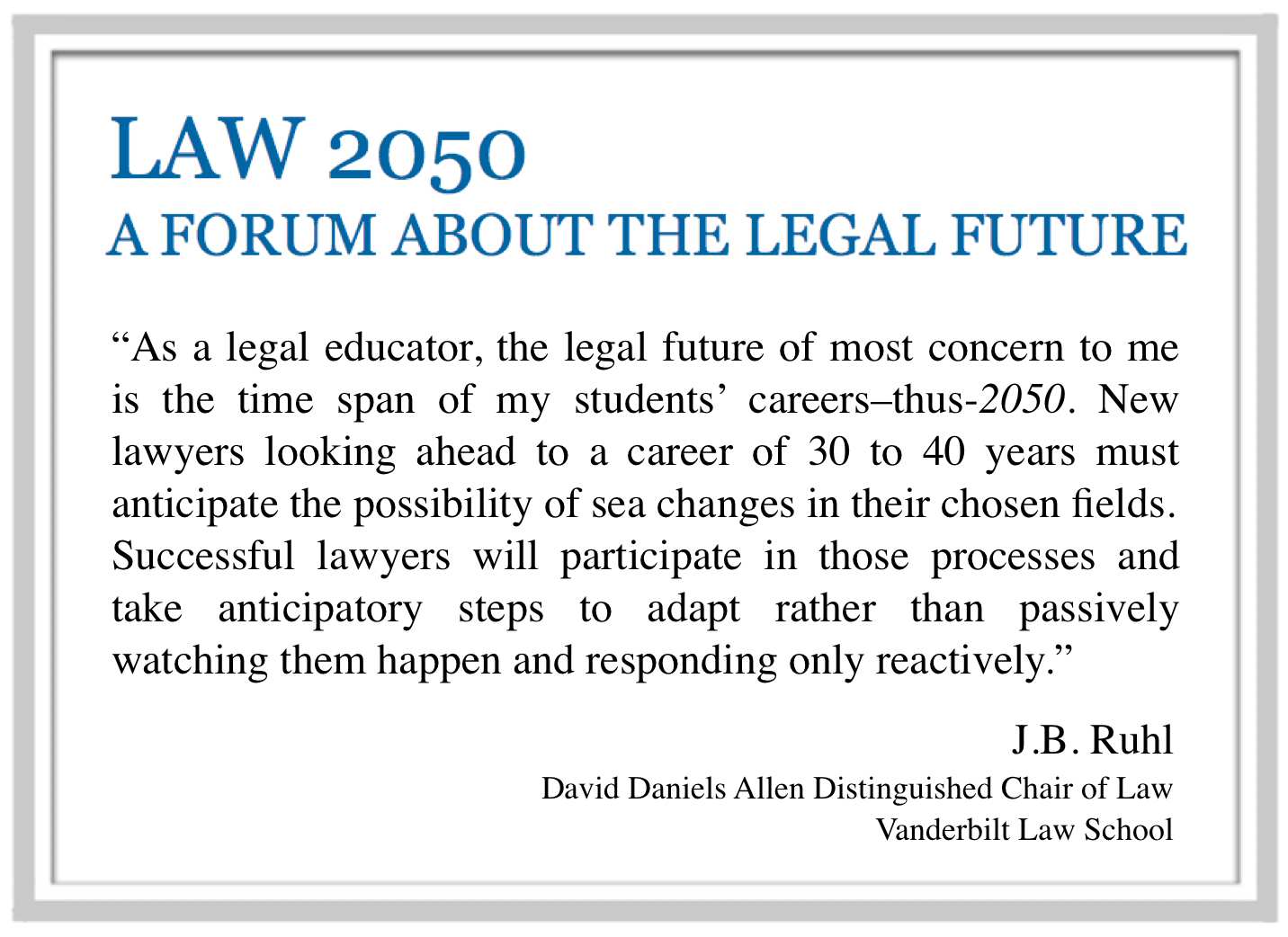 Law 2050 is a blog operated by J.B. Ruhl from Vanderbilt Law School in conjunction with his course on legal futurism offered to 2L + 3L students @ Vandy. There are two major classes of legal futurism and J.B.’s course does a nice of covering both.
Law 2050 is a blog operated by J.B. Ruhl from Vanderbilt Law School in conjunction with his course on legal futurism offered to 2L + 3L students @ Vandy. There are two major classes of legal futurism and J.B.’s course does a nice of covering both.
First, there are changes in the world that require lawyers, judges, lawmakers, etc. to develop new legal rules to take stock of shifting realities over time. Driverless cars and drones, 3-D printing, the internet of things, humans living until age 120, climate change, augmented reality and many other related innovations/developments will transform society. Law schools must produce agile and creative lawyers who can craft appropriate solutions to these developments (as they come online). Lawyers who are able to operate in such ever changing environments are the true value creators whose bespoke expertise will *never* be subjected to automation, etc.
Changes in way the lawyer work is the other class of changes for which we must prepare our students. Technology, design thinking, process engineering (lean six sigma, etc.), analytics, outsourcing, etc. have already changed and will continue to modify the legal production function. Law’s information revolution will continue to unfold and creep up the value chain. Organizing / managing / participating in this unfolding dynamic is also a form of bespoke activity. Unfortunately for many students at many schools, it has received very little (typically zero) curricular coverage (with MSU (and Vandy) excluded).
Students in J.B. Ruhl’s Law 2050 course are extremely lucky as they get the opportunity — while in law school — to consider how they fit into one or both of these forms of legal futurism.
Congrats to Hon. Ann Aiken and the other 2014 ABA Journal Legal Rebels
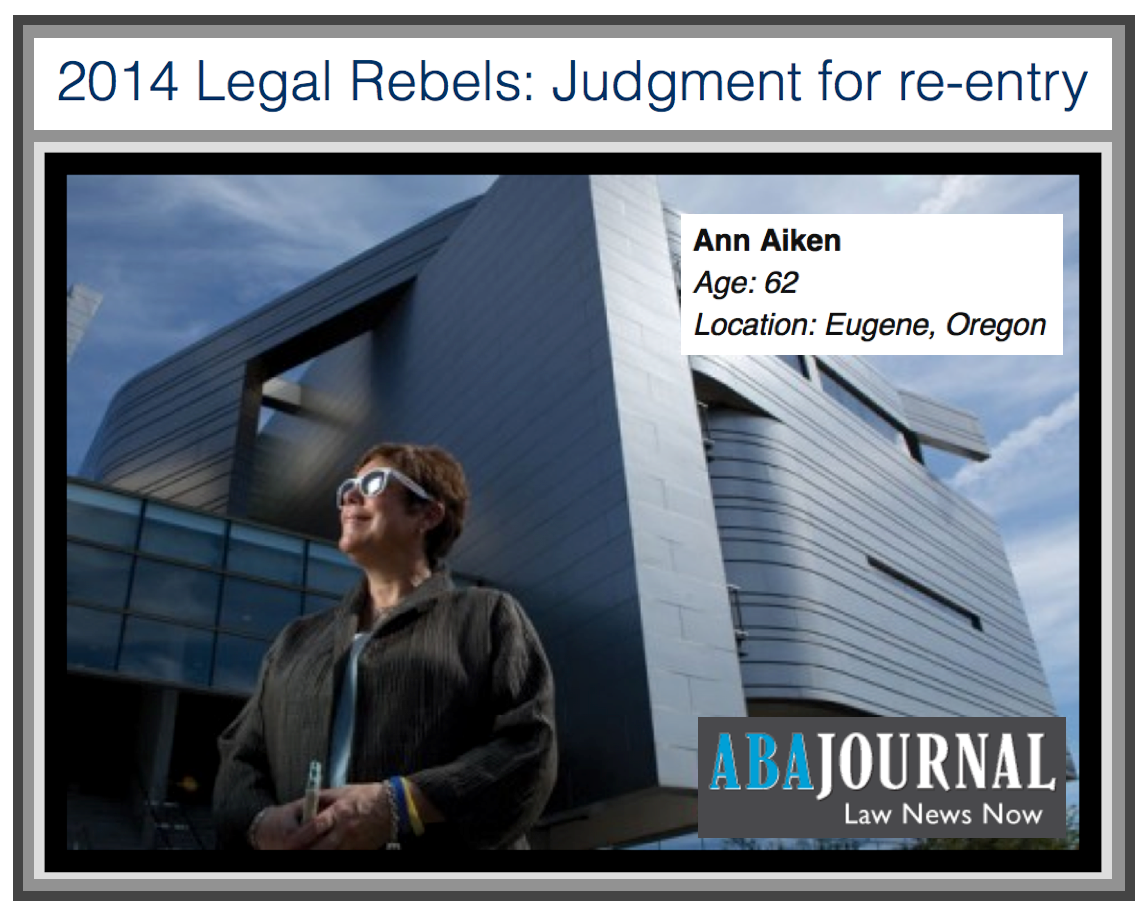 Congrats to my good friend – Judge Ann Aiken and the other 2014 Legal Rebels! See her talk from ReInventLaw Silicon Valley 2013 here.
Congrats to my good friend – Judge Ann Aiken and the other 2014 Legal Rebels! See her talk from ReInventLaw Silicon Valley 2013 here.
This is Law School? Socrates Takes a Back Seat to Business and Tech (via New York Times)
 Nice coverage of our efforts at MSU Law to inject our students with important skills that can be competitive differentiator in this difficult legal marketplace. As Dan Rodriguez described it – one sweet spot for differentiation is located somewhere in and around “the law/business/technology interface.” I completely agree. While it is far from the only mission, there is arbitrage located in this sweet spot because many law schools do not have faculty with the appropriate technical skills necessary to teach in this space (see also a lack of desire/vision). This creates room for others. I outlined all of this in some detail in my Keynote Address at the Stanford CodeX Conference last year (and in the forthcoming paper called “The MIT School of Law“). As MSU Law Dean Joan Howarth said “[L]egal education has been stronger on tradition than innovation …. What we’re trying to do is educate lawyers for the future, not the past.” Well said! I joined the faculty at MSU three years ago with the goal doing the very things that are now up and running – however – there is always more to do – so stay tuned for more.
Nice coverage of our efforts at MSU Law to inject our students with important skills that can be competitive differentiator in this difficult legal marketplace. As Dan Rodriguez described it – one sweet spot for differentiation is located somewhere in and around “the law/business/technology interface.” I completely agree. While it is far from the only mission, there is arbitrage located in this sweet spot because many law schools do not have faculty with the appropriate technical skills necessary to teach in this space (see also a lack of desire/vision). This creates room for others. I outlined all of this in some detail in my Keynote Address at the Stanford CodeX Conference last year (and in the forthcoming paper called “The MIT School of Law“). As MSU Law Dean Joan Howarth said “[L]egal education has been stronger on tradition than innovation …. What we’re trying to do is educate lawyers for the future, not the past.” Well said! I joined the faculty at MSU three years ago with the goal doing the very things that are now up and running – however – there is always more to do – so stay tuned for more.

